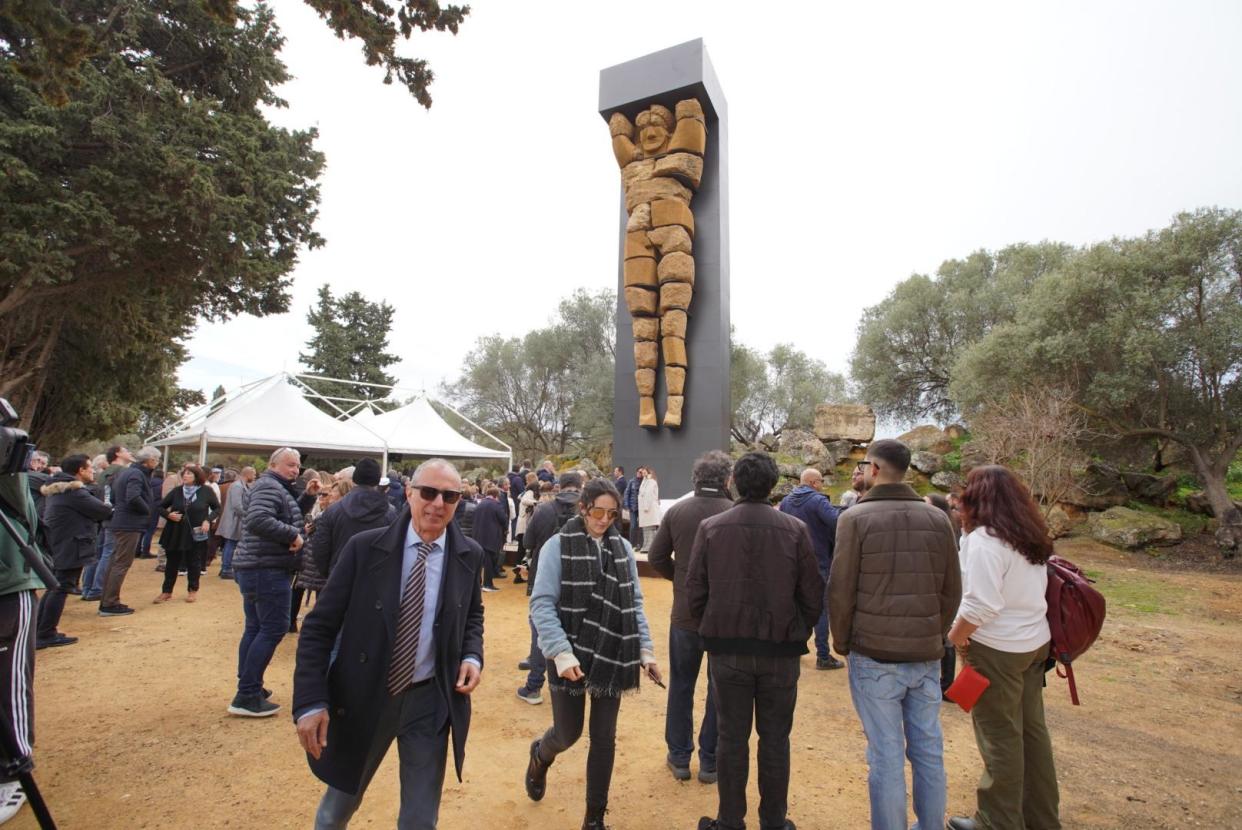Long-buried Atlas statue raised to guard Temple of Zeus in Sicily once more

A colossal statue of Atlas that lay buried for centuries among ancient ruins has been reconstructed to take its rightful place among the Greek temples of Agrigento in Sicily, after a 20-year research and restoration project.
The statue, standing at 8 metres (26ft) tall and dating back to the fifth century BC, was one of nearly 38 that adorned the Temple of Zeus, considered the largest Doric temple ever built despite never being completed.
“The Atlas will become one of the highlights of the Valley of the Temples,” said Francesco Paolo Scarpinato, a cultural heritage assessor, in a joint statement with the Sicilian governor, Renato Schifani. “We can finally introduce this imposing work to the international community.”
The statues were discovered in 1812 by Charles R Cockerell, a young British architect who was visiting Agrigento to study the ruins of the ancient city of Akragas, founded in about 582BC. Cockerell was one of the first people to realise that a massive piece of sandstone near the old Temple of Zeus was not a part of the sanctuary’s pediment but instead the head of a statue of Atlas.
In Greek mythology, Atlas was a Titan or god, who was forced to bear the sky on his shoulders after being defeated by Zeus, one of the next generation of gods called Olympians.
Cockerell later identified other pieces of the statues. According to archaeologists, the Atlases were located on the outer part of the Temple of Zeus, frozen in the act of supporting the temple and helping to sustain the entire entablature of the sanctuary, which was never completed because it was still lacking a roof when Akragas was conquered by the Carthaginians.
Over time the temple was toppled by earthquakes and in the 18th century it was quarried to provide building materials for Agrigento and Porto Empedocle.
The statue was reconstructed by taking blocks of sandstone and stacking each piece on shelves attached to a metal structure.
In 1920, the archaeologist Pirro Marconi unearthed various artefacts that led to the reconstruction of the first Atlas, which is preserved inside the Archaeological Museum of Agrigento.
In 2004, the Valley of the Temples park launched an extensive research campaign led by the German Archaeological Institute of Rome and overseen by Heinz-Jürgen Beste. This study, apart from providing new insights into the monument, led to the meticulous cataloguing of 90 more fragments belonging to at least eight different Atlases and the decision to assemble a new Atlas, piece by piece, and place it upright in front of the Temple of Zeus.
Roberto Sciarratta, the director of the Valley of the Temples park, said: “The idea was to reposition one of these Atlases in front of the temple so that it may serve as a guardian of the structure dedicated to the father of the gods.”
The Valley of the Temples is now a Unesco world heritage site and the largest archaeological park in the world, covering 1,600 hectares (3,950 acres) and featuring the ruins of seven temples, city walls, an entry gate, an agora, a Roman forum, as well as necropoli and sanctuaries.
The nearby city-state of Akragas was one of the leading population centres in the region during the golden age of ancient Greece.
Built on a high ridge over a span of 100 years, the seven temples remain among the most magnificent examples of Greek architecture. In the fifth century, more than 100,000 people lived there. According to the philosopher Empedocles, they would “party as if they’ll die tomorrow, and build as if they will live for ever”.
The city was destroyed in 406BC by the Carthaginians, and its prosperity did not return until the rise of Timoleon in the late third century BC. During the Punic wars, the Carthaginians defended the settlement against the Romans, who seized control of the city in 210BC.
During the Roman era, the city – renamed Agrigentum (subsequently known as Girgenti) – underwent a period of monumental urban redevelopment with new public buildings, including at least two temples.
The statue stands over what remains of the temple itself – a broad stone platform, heaped with tumbled pillars and blocks of stone.
“The work we have carried out on the Atlas and the Olympian area is part of our mission to protect and enhance the Valley of the Temples,” said Sciarratta. “Bringing these stone colossi back to light has always been one of our primary objectives.”


